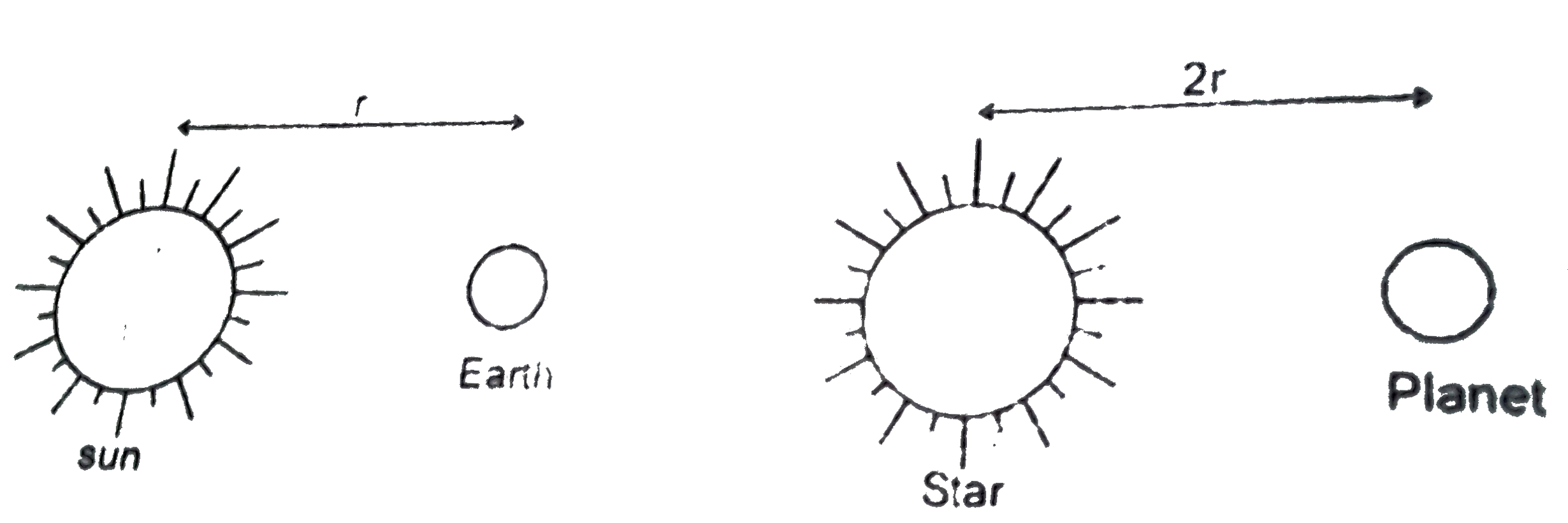The nearest star to our solar system is 4.29 light years away. How much is this distance in terms of paesecs ? How much parallax would this star (named Alpha Centauri) show when viewed from two locations of the Earth six months apart in its orbit around the Sun ?
1.32 parsec, 2.64" (second of arc)
Similar Questions
The nearest star from our solar system is 4.29 light year away. How much is this distance in terms of par sec? How much parallax would this star (named Alpha Centauri) show when viewed from two locations of the earth six months apart in its orbit around the sun?
View SolutionThe nearest star to our solar system is 4.29 light years away. How mcuh is this distance in terms of par sec ? How mcuh parallax would this star show when viewed from two locations of the earth six months apart in its orbit around the sun?
View Solution
Knowledge Check
The nearest star to our solar system is 4.29 light year away. How much is this distance in terms of parsecs/?
A1.32B3.21C2.31D3.12Read the passage carefully and select the best answer to each question out of the given four alternatives.
The quest to find life outside the solar system got a big boost with the discovery of seven Earth-size extra-solar planets, or exoplanets, orbiting a dwarf star about 40 light years away. Unlike earlier discoveries of exoplanets, all seven planets could possibly have liquid water - a key to life, as we know it on Earth - with three planets having the greatest chance. This is by far the largest collection of Earth-like planets in the habitable .Goldilocks. zone of a star- neither too close nor too far from a star, which raises the possibility of liquid water being present on the surface. Only Earth has liquid water in the solar system. Since the dwarf star is much cooler than the Sun, the dimming of light each time a planet passes or transits before the star could be easily recorded from Earth unlike in cases when planets transit a Sun-like bright star. Since the initial discovery of three planets was made using the Chile-based Transiting Planets and Planetesimals Small Telescope, the exoplanet system is called TRAPPIST-1.
How many planets in our solar system have liquid water?ATwoBThreeCOneDFourRead the passage carefully and select the best answer to each question out of the given four alternatives.
The quest to find life outside the solar system got a big boost with the discovery of seven Earth-size extra-solar planets, or exoplanets, orbiting a dwarf star about 40 light years away. Unlike earlier discoveries of exoplanets, all seven planets could possibly have liquid water - a key to life, as we know it on Earth - with three planets having the greatest chance. This is by far the largest collection of Earth-like planets in the habitable .Goldilocks. zone of a star- neither too close nor too far from a star, which raises the possibility of liquid water being present on the surface. Only Earth has liquid water in the solar system. Since the dwarf star is much cooler than the Sun, the dimming of light each time a planet passes or transits before the star could be easily recorded from Earth unlike in cases when planets transit a Sun-like bright star. Since the initial discovery of three planets was made using the Chile-based Transiting Planets and Planetesimals Small Telescope, the exoplanet system is called TRAPPIST-1.
What made it easier to record the passage of the planet in front of the star?AThe fact that the star is much smaller and cooler than our SunBThe fact that the star is much bigger and cooler than our SunCThe fact that the star is much smaller and hotter than our SunDThe fact that the star is much bigger and hotter than our Sun
A star is located 9 ly away from us. What is its distance in par sec ? What is the parallax shown by this star when viewed from two locations 3×1011m apart. Given 1 par sec =3.084×1016m,and1ly=9.46×1015m.
View SolutionA star is ten light years away from the earth. Suppose it brightens up suddenly today. After how much time shall we see this change?
View SolutionThe principle of 'parallax' in Art. 1(c ).4. is used in the determination of distacne of very distant stars. The baseline AB in the line joining the Earth's two locations six months apart in its orbit around the sun. That is, the baseline is about the diameter of the Earth 's orbit ≈3×1011m. However, even the nearest stars are so distnat thet with such a long baseline, they show parallax only of the order of 1''(second) of arc or so . A parsec is a convenient unit of length on the astronomical scale. It is the distance of an objhect that will shown a parallax of 1'' (second) of arc fome oppsoite ends of a beasline equal to the distance from the Earth to the sun. How much is a parsec in terms of metres ?
View SolutionLet a star be much brighter than our sun but its mass is same as that of sun If our earth has average lift span of man as 70years In the earth like planet of this star system having double the distance from our star find the average lift span of a man on this planet in terms of our year
 .
.
View SolutionLet a star be much brighter than our sun but its mass is same as that of sun If our earth has average lift span of man as 70years In the earth like planet of this star system having double the distance from our star find the average lift span of a man on this planet in terms of our year
 .
.
View Solution
